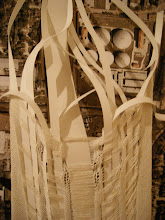“Zoning prevents discordant or harmful uses while protecting property values, but it does so at the cost of monotony and uniformity”
Well, there’s a town in
(Size Comparison with 3 other major cities,
Because

Borders are drawn when a zone (commercial, residential, industrial, education, etc.) hits the edge of another or in the case of residential zones, when it changes grain, which is frequently the signature of another neighborhood often of another character.
Possibly each specific land use area can be translated simply into a speed, but only when used in context and in comparison with its neighbors. For example, commercial land is considerably quicker than residential as it is meant to service many people per day as opposed to a few. A commercial area is a destination zone, one to obtain things and return to ones activities. Possibly it is a zone of leisure where one can dawdle and move from place to place yet it still serves as an intermediary location. Residences can vary in speed as well, depending heavily on density yet they remain as a destination of significantly more permanence. The pace slows when on returns home and movement dwindles. Possibly the grain of higher speed activities and program adheres to rules significantly more fluid than those of the nearly sedentary-paced residential zones.
The zone that seems to be the most effected by the highway is the commercial. See diagram......More to come……

POINTS OF FURTHER STUDY:
· Where does this highway touch the ground and where does it rise above? How does this space created (either as a thoroughfare or as a wall) affect the program that happens next to it?
· Diagram of these programs as a measure of speed.


No comments:
Post a Comment